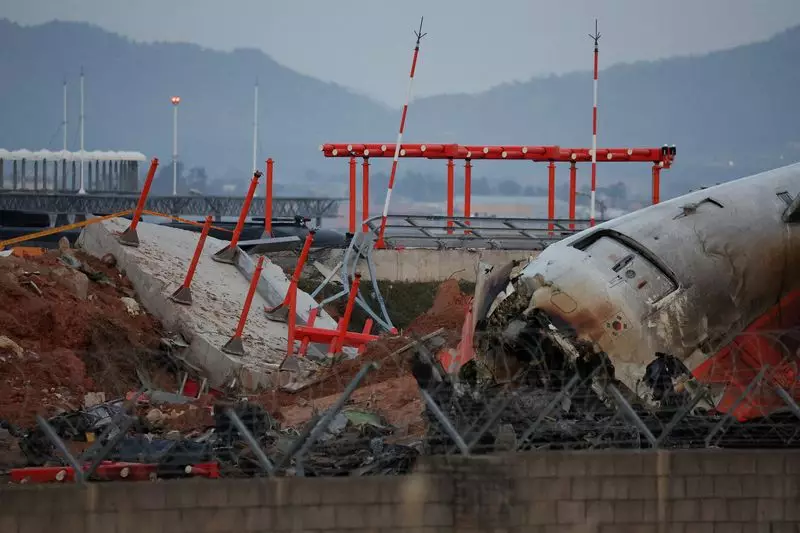The recent Jeju Air plane crash that occurred in South Korea on December 29, resulting in 179 fatalities, marks a sorrowful chapter in the nation’s aviation history. This disaster has drawn significant public concern and international scrutiny, as the nation prepares to release its preliminary investigative report. The South Korean transport ministry is tasked with elucidating the factors contributing to this calamity and is set to deliver initial findings as early as Monday.
Among the many concerns is the potential effect of a bird strike. The unfortunate flight 7C2216, which was approaching Muan International Airport from Bangkok, reportedly encountered birds shortly before the crash. The flight data revealed that the crew recognized the presence of birds near their Boeing 737-800 and declared a mayday just moments later. This quick decision is crucial, as it may signal a desperate attempt to mitigate an unfolding crisis.
The correlation between the bird strike and the subsequent disaster is under intense examination. Surveillance footage from the airport has led officials to confirm contact between the aircraft and birds, although the exact timing of such interaction remains uncertain. Furthermore, physical evidence, including duck feathers and blood found in the aircraft’s engines, raises serious questions about the role avian interference played in this tragedy.
Given the complexity of the incident, the ministry has recognized that a meticulous analysis of various data points will take time. The review process involves scrutinizing flight data, cockpit voice recordings, and communication between the pilots and air traffic control. Notably, the cockpit voice recordings ceased a mere four minutes before the crash, which presents a significant challenge for investigators trying to piece together the final moments.
In collaboration with international agencies, including the U.S. National Transportation Safety Board and France’s Bureau of Enquiry and Analysis for Civil Aviation Safety, South Korea aims to ensure a comprehensive investigation. These partnerships are essential not only for sharing expertise but also for bolstering confidence in the validity of the conclusions drawn.
Another significant element of the investigation is the assessment of the embankment that possibly exacerbated the crash’s severity. This concrete structure, which supports navigation antennas, is now the subject of further inquiry. Experts suggest that its presence might have contributed to the catastrophic outcomes by limiting the plane’s maneuverability.
In light of this information, the ministry has already taken steps to remove the embankment, further indicating a proactive approach to addressing potential safety hazards. The decision not only reflects a commitment to rectifying any contributing infrastructural flaws but also serves to restore public confidence in South Korea’s aviation safety measures.
As the investigation unfolds, the focus remains on understanding the multitude of factors that led to the tragic loss of life. This incident not only serves as a reminder of the vulnerabilities present within commercial aviation but also highlights the pressing need for enhanced safety regulations and wildlife management practices near airports.
Ultimately, the preliminary report and subsequent findings will be crucial in determining what went wrong and how such incidents can be prevented in the future. The aviation community and the public alike will be watching closely as South Korea grapples with the repercussions of this tragedy and works towards ensuring safer skies for all.

